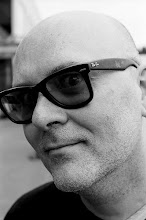We can divide the computational universe into three sectors: computable problems; non-computable problems (that can be given a finite, exact description but have no effective procedure to deliver a definite result); and, finally, questions whose answers are, in principle, computable, but that, in practice, we are unable to ask in unambiguous language that computers can understand.
We do most of our computing in the first sector, but we do most of our living (and thinking) in the third. In the real world, most of the time, finding an answer is easier than defining the question. It's easier to draw something that looks like a cat, for instance, than to describe what, exactly, makes something look like a cat. A child scribbles indiscriminately, and eventually something appears that resembles a cat. A solution finds the problem, not the other way around. The world starts making sense, and the meaningless scribbles (and a huge number of neurons) are left behind.
This is why Google works so well. All the answers in the known universe are there, and some very ingenious algorithms are in place to map them to questions that people ask.


No comments:
Post a Comment